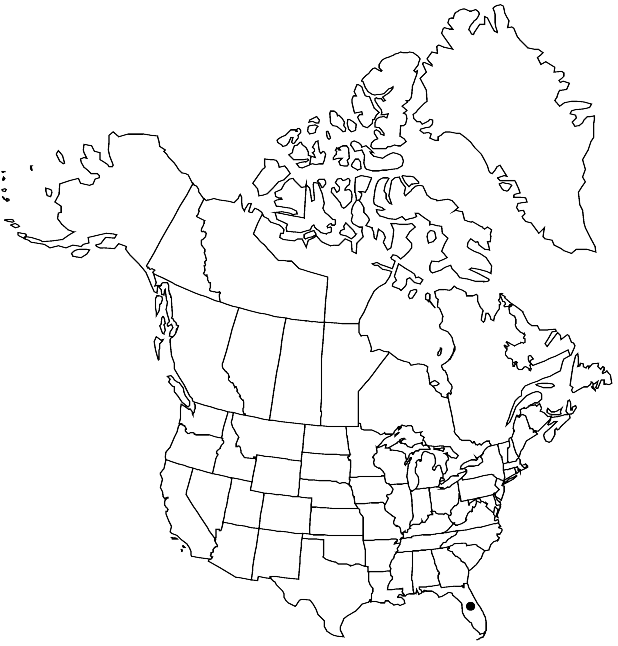Nasturtium floridanum
Novon 8: 125. 1998.
Plants usually glabrous throughout, rarely sparsely pubescent. Stems 1.5–9 dm. Cauline leaves: petiole not winged, base not auriculate; blade 3–5(–7)-foliolate, (1.5–)3–7(–10) cm; lateral leaflets petiolulate, rachis not winged, blade often much smaller than terminal; terminal leaflets (or simple blade) subreniform, orbicular, ovate to oblong, or obovate, 0.5–3.5 × 0.5–3 cm, base obtuse, subcordate, rounded, or cuneate, margins repand, entire, or, rarely, obtusely dentate, apex obtuse or rounded. Fruiting pedicels divaricate, straight or slightly recurved, 5–15 mm. Flowers: sepals 2–3 × 1–1.5 mm; petals white, spatulate, 4–5 × 1.5–2 mm, apex rounded; filaments 2–3 mm; anthers 0.6–0.9 mm. Fruits 1.5–3 cm × 0.9–1.2 mm; ovules 34–50 per ovary; style 0.5–2.5 mm. Seeds uniseriate, light or yellowish brown, ovoid, 0.6–0.8(–0.9) × 0.4–0.7 mm, minutely reticulate with 400–500 areolae on each side. 2n = 32.
Phenology: Flowering Feb–Oct.
Habitat: Flowing streams, hummock margins, springs, swamps, stream banks
Elevation: 0-50 m
Discussion
Nasturtium floridanum is known from Brevard, Citrus, Clay, Collier, Columbia, Dade, Duval, Gilchrist, Hillsborough, Lake, Levy, Manatee, Marion, Seminole, Sumter, Taylor, Volusia, and Wakulla counties.
Nasturtium stylosum Shuttleworth ex O. E. Schulz (1936), not (de Candolle) O. E. Schulz ex Cheesman (1911) is an illegitimate name, sometimes found in synonymy with N. floridanum.
Selected References
None.
